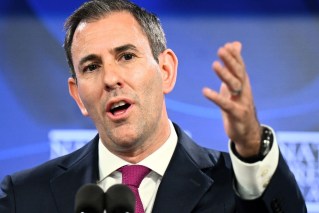Workers hunkering down as jobs recovery unravels amid Delta blues


The outlook for wages growth is dimming as the Delta variant unravels Australia's jobs market recovery. Photo: Getty
Some worrying trends are going on in the jobs market right now.
Workers feel like they can’t search for new jobs as the Delta variant rips through the economy and are instead hunkering down in their roles.
Meanwhile, bosses are starting to advertise fewer jobs as economists brace for a lockdown-induced rise in the unemployment rate next Thursday.
It all means stronger wages growth is becoming more elusive as health outcomes worsen across the country – particularly in Greater Sydney.
Jobs recovery unravelling
Until recently, Australia’s jobs market recovery was leading the world.
But the Delta variant has knocked it off course and the data is starting to show that.
On Thursday, SEEK said the number of job ads on its platform fell by 4.1 per cent in July, with every state and territory except Victoria reporting declines.
Ads crashed a whopping 14.2 per cent in New South Wales and fell by 30.7 per cent across the national hospitality and tourism industry, SEEK revealed.
And at the same, applications per ad rose for the second month in a row and were up 2.6 per cent, meaning there was more competition for fewer advertised positions.

Source: SEEK (click to enlarge).
One positive was that job ads were still up 20.6 per cent on 2019 levels.
But BIS Oxford chief economist Sarah Hunter said the data demonstrated the extent to which the Delta variant had “put the brakes” on the jobs market.
“The job ads data is a natural lead for the labour market,” she told TND.
“Employment in NSW will show a fall in the report for July and likely a further drop in August and possibly September.”
Unemployment hides the real pain
Economists are bracing for unemployment to tick up when the ABS releases data for July next Thursday after hundreds of thousands of workers lost income during lockdowns in Sydney, Melbourne and Brisbane.
National Australia Bank economists expect the jobless rate will hit 5.5 per cent (currently 4.9 per cent) by the end of the year.
But the headline unemployment rate is likely to hide the full extent of the pain, because many workers will keep their jobs but work zero hours.
“We need to account for what’s happening with participation and hours to get a full sense of the damage done,” Indeed APAC economist Callam Pickering told The New Daily.
“The unemployment rate can be misleading.”
Accounting for the number of workers on zero hours, the jobless rate actually rose to 9.7 per cent in July, according to Roy Morgan.
This measure is known as the effective unemployment rate and is important because it more accurately captures how much income people are earning from work as well as the spare capacity in the labour market.
Defined by the RBA as the gap between actual unemployment and the unemployment rate associated with ‘full employment’, the level of spare capacity in the labour market has a direct bearing on how likely workers are to receive a decent pay rise.
Perhaps unsurprisingly, the Delta outbreaks have made it less likely that bosses will increase wages as fast as we previously thought they would.
And this is because there are more people looking for work and fewer bosses demanding that work, meaning the price of labour will rose more slowly.

Source: Saul Eslake (click to enlarge)
Workers hunkering down
Fewer job ads and rising unemployment aren’t the only factors dashing hopes of faster wages growth in the near term, either.
There is also evidence that workers are responding to the Delta outbreaks by hunkering down in their current roles, making it easier for bosses to retain staff without offering higher wages.
Mr Pickering surveyed more than 3000 workers in July and found just 9 per cent were actively and urgently looking for new work.
Only 12.3 per cent of those with no job were looking actively and urgently.
“A lot of households are still in a pandemic mindset,” Mr Pickering said.
“They don’t want to take risks. They don’t want to risk their existing job security for a new opportunity, even if it has a higher salary.”
Treasury data from 2019 found that falls in job switching among workers push down wages growth.
One positive sign for wages is that employers are still reporting finding it difficult to find new staff, which could help to offset the hunkering effect.
But Mr Pickering only expects a modest increase in June quarter wages when the ABS publishes its Wage Price Index data on Wednesday.








